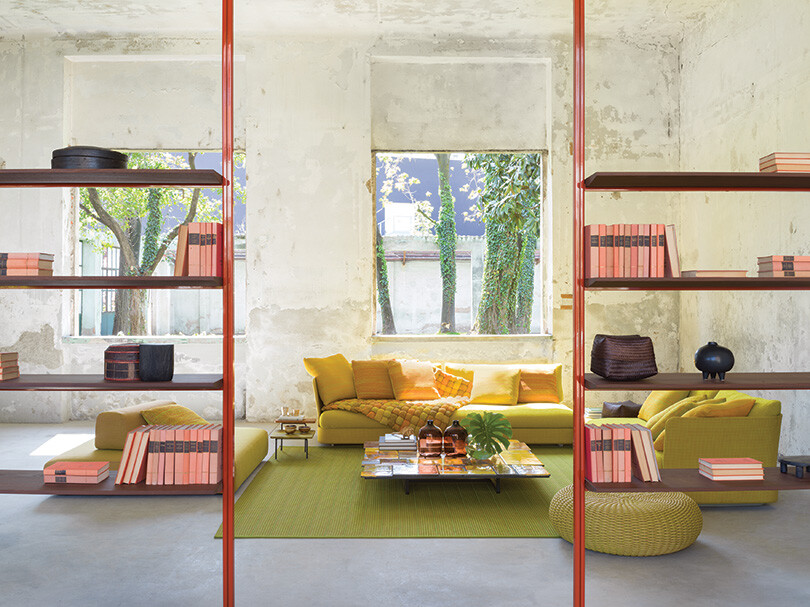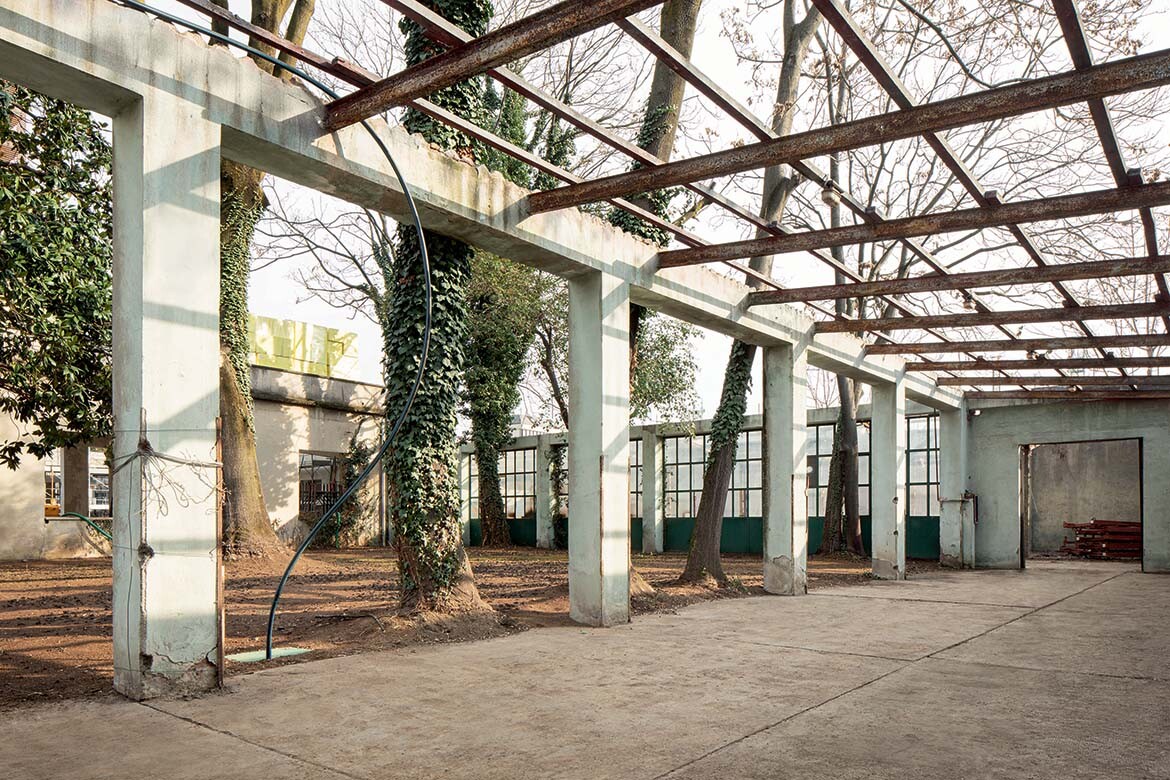Paola Lenti – an outdoor furniture brand that is instantly recognisable with its vibrant colour combinations and rope-form pieces – has built a reputation for doing things differently. The Italian company set up an unconventional home in a disused warehouse space on Via Orobia in the southeast of Milan. There wasn’t much going on in the area, and then the Rem Koolhaas/OMA-design Prada Museum sprang up.
The brand has since been searching for the perfect (and more permanent) site. “From the beginning, we’ve always looked for very special spaces. We look for spaces that have outdoor areas. But the desire of the company was always to find a permanent space. Not just to use it for one week, but something we can use all the time,” shares Anna Lenti, CEO and sister of the eponymous Paola Lenti.
The new space is currently being developed but the Dergano site was opened during Salone del Mobile. The disused paper factory, with peeling, crumbling walls, and ample outdoor spaces is set to be the new 4,500-square-metre permanent home. Anna says, “It’s a little bit too big for only a showroom, so we will have a gallery space and in the second phase of the project, there will be a restaurant and boutique hotel. We’re kind of creating a Paola Lenti village.”
The old paper factory is set to become a true home for Paola Lenti and the mixed-use concept is about bringing people together all through the year. Anna adds that the plans include “two beautiful winter gardens with glass houses” to make it inviting all year round. The aspiration being to create a space where people living in Milan can come visit the gallery and event activations – a space that lives and breathes the design energy of the city.

While there are exciting things on the horizon, there is a lot of history to celebrate. This year marks 25 years of collaboration with Francesco Rota, one of the main designers of the brand and a working partnership that has strengthened the signature aesthetic of Paola Lenti.
Rewind to 1998, Paola Lenti is a rug and accessories brand. Paola asked Francesco to design a piece of furniture using a felt fabric, the Linear sofa was the outcome. “It wasn’t outdoor at that point, but at that time, Paola’s collection was only based on felt rugs, and she wanted to give it a three-dimensional shape and asked Francesco to have the felt rising from the floor,” explains Anna.

The big evolution in the brand’s history came with the first outdoor collection in 2003. “We had the idea of doing outdoor, but in the same way as an indoor range. We really were the first. It started with one rope, a rock climbing rope. The first outdoor piece came when Paola created this rope material. It’s not something that can be used on just any design because it’s very thick and difficult to stitch, but Francesco designed the Island,” says Anna.
Working away behind the scenes is a truly harmonious partnership between Paola and Francesco, Anna notes that “they immediately understood each other. It’s not just a collaboration with the company and the designer, but really teamwork between the two of them”.
This synergy in understanding each other, for Paola to create a material and for Francesco to be able to transform the material into a beautiful product is part of the winning formula according to Anna. That, and the fact that as a brand there is lots of research and development into new materials.

What connects all the products are the unique colour combinations, and even though there are approximately 400 colours in the Paola Lenti colour library, when new materials and colours are introduced, it’s done in a way that will ensure old and new can be tied together.
Already exuding plenty of charm and history, the new space will form the backdrop for the kaleidoscopic colours – and we can’t wait to see it when it’s completed.
Paola Lenti
paolalenti.it
dedece
dedece.com
Photography by Sergio Cimenti

